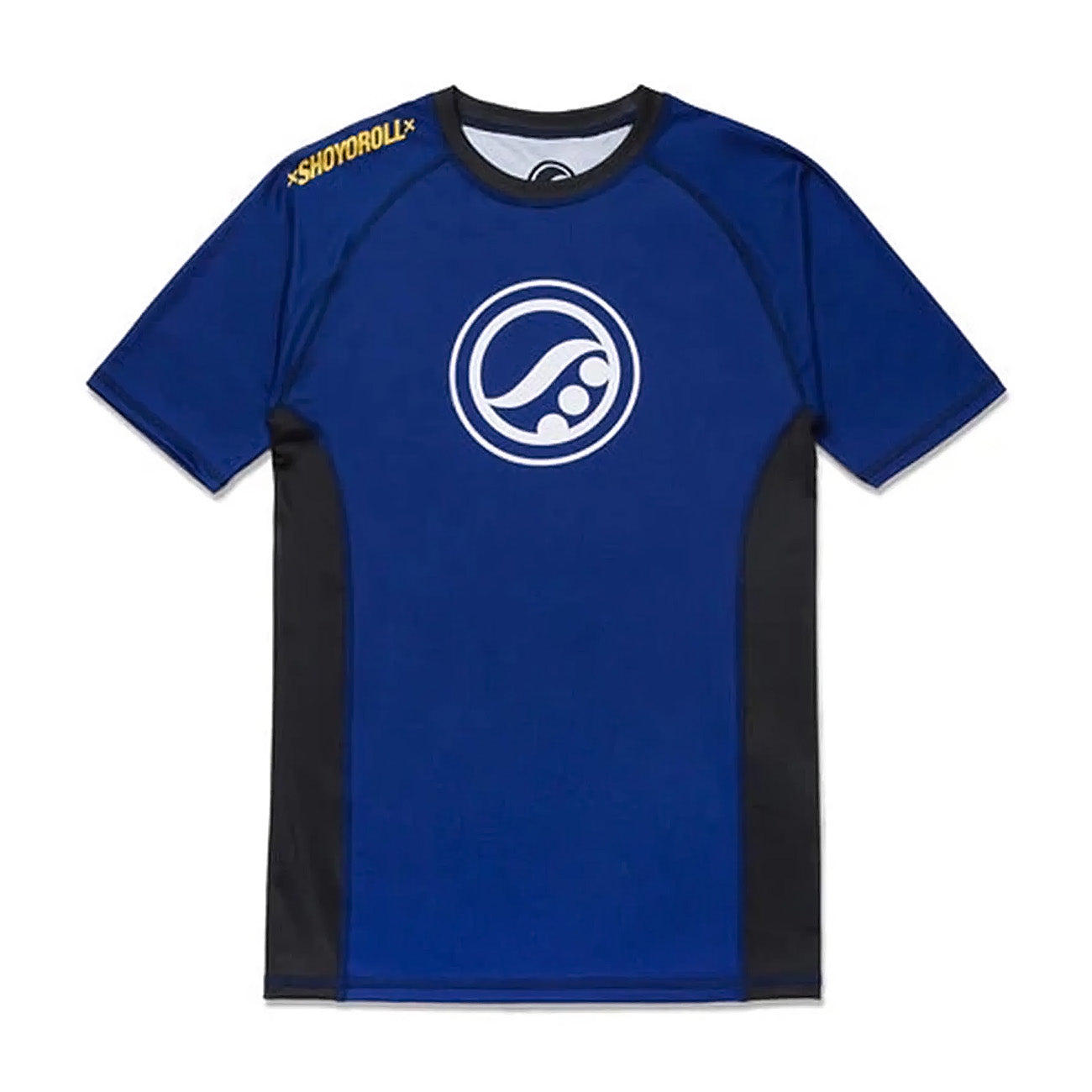Understanding BJJ Weight Classes: Your Guide to Fair and Safe Competition
Brazilian Jiu-Jitsu (BJJ) weight classes ensure fair, safe, and technique-focused matches. By grouping practitioners by size, BJJ weight classes let you sharpen your skills without relying on physical advantages like strength or mass.
Whether you’re a beginner starting your journey or a seasoned competitor eyeing tournaments, knowing BJJ weight classes helps you train smarter and perform better. This guide covers divisions, weigh-in rules, training tips, and gear choices to help you succeed in BJJ.
Table of Contents
- Why BJJ Weight Classes Are important?
- IBJJF Weight Classes: Adult, Juvenile, and Masters
- Adult Male BJJ Weight Classes (Gi Included)
- Adult Female BJJ Weight Classes (Gi Included)
- Gi vs. No-Gi Weigh-Ins: Key Differences
- Training for Your BJJ Weight Class
- At-Home BJJ Training for All Divisions
- How to Choose the Right BJJ Gear for Weight Class
- Planning Your BJJ Competition Schedule
- FAQs About BJJ Weight Classes
- Final Words: Understanding BJJ Weight Classes
Why BJJ Weight Classes Are important?
BJJ weight classes create a level playing field. They match you with similar-sized opponents, reducing injury risks and emphasizing technique over brute force. For beginners, understanding weight classes guides you in picking training partners during open mats. For competitors, it shapes your preparation, from weight management to strategic training plans.

Benefits of Weight Classes in BJJ
- Safety: Minimizes injuries from size mismatches in sparring or competition.
- Fairness: Encourages skill and strategy over physical dominance.
- Strategy: Allows you to craft game plans for your division’s body types and styles.
- Skill Growth: Prepares you for absolute (open weight) divisions to test techniques across sizes.
IBJJF Weight Classes: Adult, Juvenile, and Masters
The International Brazilian Jiu-Jitsu Federation (IBJJF) sets the benchmark for most gi-based BJJ tournaments. Below are the IBJJF weight classes for adult men and women, factoring in gi weight at weigh-ins. Juvenile (16–17 years) and Masters (30+ years) divisions use similar weight limits with minor tweaks for age-specific needs.
Adult Male BJJ Weight Classes (Gi Included)
|
Division |
Weight Limit (kg) |
Weight Limit (lbs) |
|
Rooster |
Up to 57.5 |
Up to 126.8 |
|
Light Feather |
Up to 64 |
Up to 141.1 |
|
Feather |
Up to 70 |
Up to 154.3 |
|
Light |
Up to 76 |
Up to 167.6 |
|
Middle |
Up to 82.3 |
Up to 181.4 |
|
Medium Heavy |
Up to 88.3 |
Up to 194.7 |
|
Heavy |
Up to 94.3 |
Up to 207.9 |
|
Super Heavy |
Up to 100.5 |
Up to 221.6 |
|
Ultra Heavy |
Over 100.5 |
Over 221.6 |
Adult Female BJJ Weight Classes (Gi Included)
|
Division |
Weight Limit (kg) |
Weight Limit (lbs) |
|
Rooster |
Up to 48.5 |
Up to 106.9 |
|
Light Feather |
Up to 53.5 |
Up to 117.9 |
|
Feather |
Up to 58.5 |
Up to 128.9 |
|
Light |
Up to 64 |
Up to 141.1 |
|
Middle |
Up to 69 |
Up to 152.1 |
|
Medium Heavy |
Up to 74 |
Up to 163.1 |
|
Heavy |
Up to 79.3 |
Up to 174.8 |
|
Super Heavy |
Over 79.3 |
Over 174.8 |
For more on women’s divisions, visit the official IBJJF women’s weight classes.
Juvenile and Masters Divisions
- Juveniles (16–17): Follow similar weight classes with slight adjustments for younger athletes.
- Masters (30+): Use adult weight limits, grouped by age (e.g., Masters 1: 30–35, Masters 2: 36–40) for fair matches.
Gi vs. No-Gi Weigh-Ins: Key Differences
Weigh-in rules differ between gi and no-gi BJJ tournaments, affecting your weight class preparation.
 |
 |
- Gi Weigh-Ins: In IBJJF gi events, you weigh in wearing your gi, adding 2–4 pounds (0.9–1.8 kg). Check your gi’s weight at home to plan accurately. See how much does a BJJ gi weigh for details.
- No-Gi Weigh-Ins: No-gi tournaments, like IBJJF or ADCC, require weigh-ins in a rash guard and shorts. ADCC often holds weigh-ins the day before, giving time to rehydrate. Review IBJJF no-gi uniform rules for compliance.
👉Pro Tip: Practice weigh-ins with your competition gear to know your true weight. For early weigh-ins, rehydrate slowly over 12–24 hours with electrolyte drinks to boost performance.
Training for Your BJJ Weight Class
Your BJJ weight class shapes your training, balancing speed, strength, and endurance for your division’s demands.
Lightweight Divisions (Men: Up to 70 kg, Women: Up to 58.5 kg)
- Focus: Speed, agility, and cardiovascular endurance.
- Training Tips: Practice explosive takedowns, high-rep bodyweight circuits, and fast-paced guard transitions.
- Example Drills: Shrimp escapes, berimbolo chains, or sprint intervals for match-like intensity.
Middleweight Divisions (Men: 76–82.3 kg, Women: 64–69 kg)
- Focus: Blend of power, technique, and mobility.
- Training Tips: Combine strength exercises (e.g., deadlifts, pull-ups) with technical sparring to build versatility.
- Example Drills: Positional sparring from half-guard or closed guard to hone control.
Heavyweight Divisions (Men: 94.3 kg+, Women: 79.3 kg+)
- Focus: Pressure passing, base stability, and maximum strength.
- Training Tips: Emphasize heavy lifts (e.g., squats, bench press) and pressure-based techniques like over-under passes.
- Example Drills: Top-position control drills or grip-strength exercises with gi towels.
At-Home BJJ Training for All Divisions
No gym access? Keep your skills sharp with these solo drills:
|

|
Managing Weight for BJJ Competitions
Hitting your BJJ weight class limit safely is critical for performance. Use these strategies to manage weight effectively:
- Gradual Weight Loss: Lose 1–2% of body weight weekly with a diet rich in lean proteins, complex carbs, and healthy fats.
- Cardio and Strength Mix: Incorporate HIIT or rowing to burn fat while maintaining strength training.
- Hydration: Avoid extreme dehydration, which saps energy and focus. Rehydrate post-weigh-in with water and electrolytes.
- Resources: Explore weight loss for BJJ for safe strategies.
Weigh-In Tips
- Weigh yourself in your competition gi or no-gi gear during training to mimic tournament conditions.
- Wear lightweight clothing to the scale for same-day weigh-ins.
- For early weigh-ins (e.g., ADCC), rehydrate gradually over 12–24 hours to restore energy.
How to Choose the Right BJJ Gear for Weight Class
Your bjj gear impacts weigh-ins and tournament compliance. Pick equipment suited to your BJJ weight class and event rules.
Gi Selection
- Lightweight Gis: Best for lighter weight classes to ease cuts (350–450 GSM fabrics).
- Durable Gis: Heavier divisions may prefer 550–650 GSM gis for tough grips.
- Rules: Follow IBJJF gi rules for patch placement and fit.
- Comparison: See karate gi vs. BJJ gi for insights.
No-Gi Gear
- Rash Guards: Choose short- or long-sleeve based on comfort and climate. Check IBJJF no-gi uniform rules.
- Shorts: Use board shorts without pockets or metal zippers to avoid penalties.
- Inspection: Ensure seams and logos meet tournament standards.
Shoyoroll Feature Products

🔥 SAVE UPTO 50%
✅ 30 Days Return & Refund
🚚 Free Worldwide Shipping

🔥 SAVE UPTO 50%
✅ 30 Days Return & Refund
🚚 Free Worldwide Shipping

🔥 SAVE UPTO 50%
✅ 30 Days Return & Refund
🚚 Free Worldwide Shipping
Planning Your BJJ Competition Schedule
A smart competition schedule balances preparation, performance, and recovery to keep you at your best.
1. Frequency: Compete in 4–6 tournaments yearly, with 6–8 weeks of prep per event.
2. Local Events: Use smaller tournaments to test techniques in low-stakes settings.
3. Major Competitions: Limit high-level events (e.g., IBJJF Worlds) to 1–2 per year to avoid burnout.
Training Cycle Breakdown
- Weeks 1–4 (Base Building): Focus on endurance, technical drills, and mobility.
- Weeks 5–7 (Intensity): Ramp up sparring and strength work for competition intensity.
- Week 8 (Taper): Reduce volume, fine-tune weight cuts, and prioritize recovery.
- Post-Tournament: Take a recovery week with light solo drills or yoga. See BJJ workouts at home.
Read More: Common Mistakes to Avoid in Jiu Jitsu as a Beginner
FAQs About BJJ Weight Classes
What are the standard BJJ weight classes?
IBJJF gi tournaments have nine male divisions (Rooster to Ultra Heavy) and eight female divisions (Rooster to Super Heavy), weighed with the gi.
How does my gi affect weigh-ins?
A gi adds 2–4 pounds. Weigh yourself in your competition gi during training to plan accurately.
Can I compete in the absolute division?
Yes, absolute divisions are open to all adult belt levels, testing your skills against varied sizes.
How much weight should I cut for my division?
Lose 1–2% of body weight weekly to stay healthy. Drastic cuts harm energy and focus.
How many BJJ tournaments should I enter yearly?
Four to six tournaments balance skill growth and recovery. Over 12 events risks burnout or injury.
Final Words: Understanding BJJ Weight Classes
BJJ weight classes guide your training, competition prep, and gear choices for safe and fair matches. From IBJJF divisions to weigh-in strategies, tailor your approach to your weight class—speed for lightweights, balance for middleweights, power for heavyweights. Manage weight wisely, choose compliant gear, and plan 4–6 tournaments yearly for peak performance. Start your next training block, refine your techniques, and share your progress with your BJJ community. For more tools, visit BJJ training equipment.








